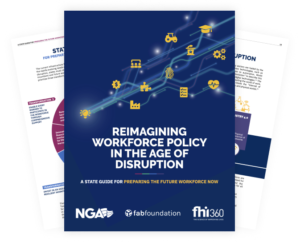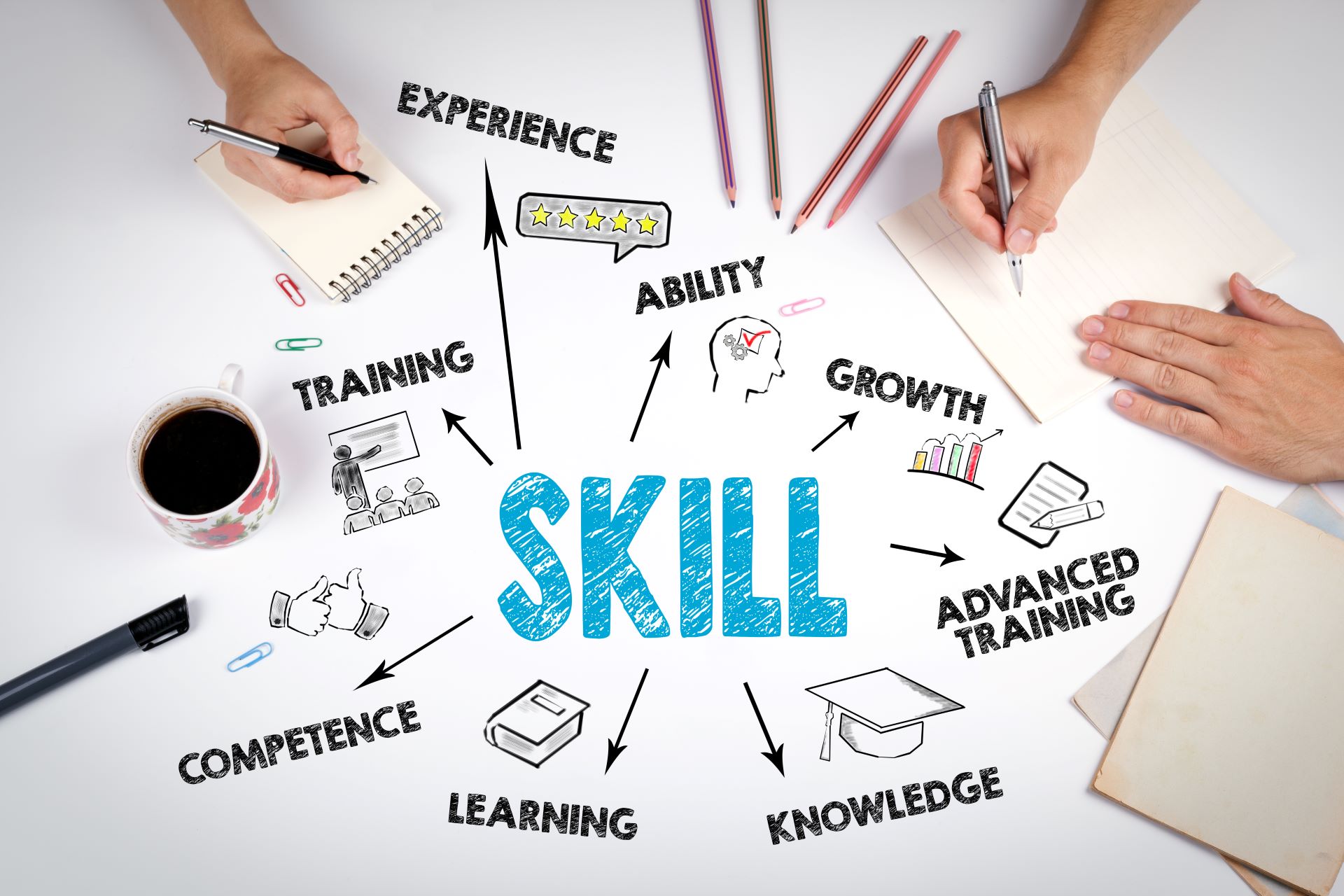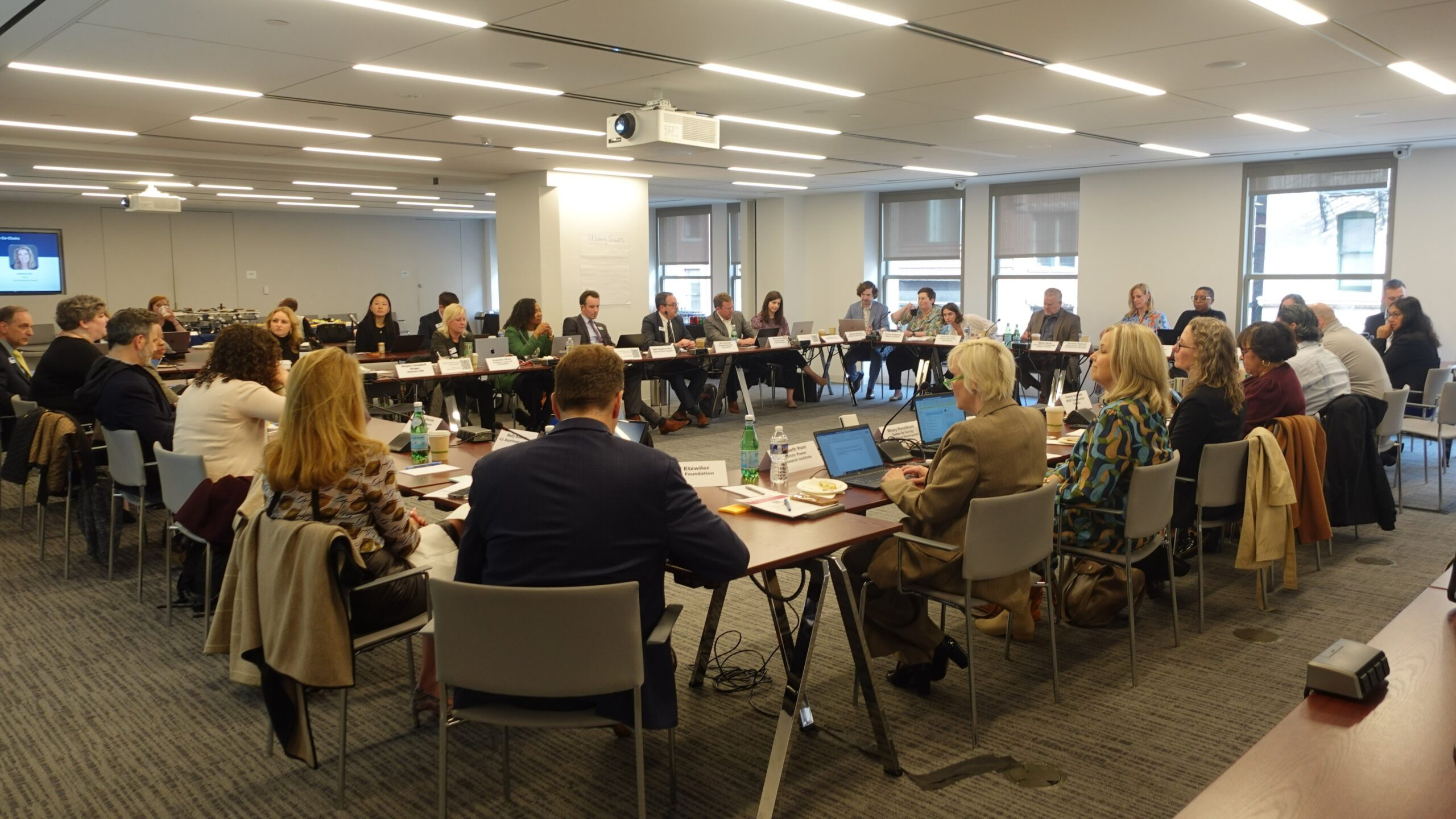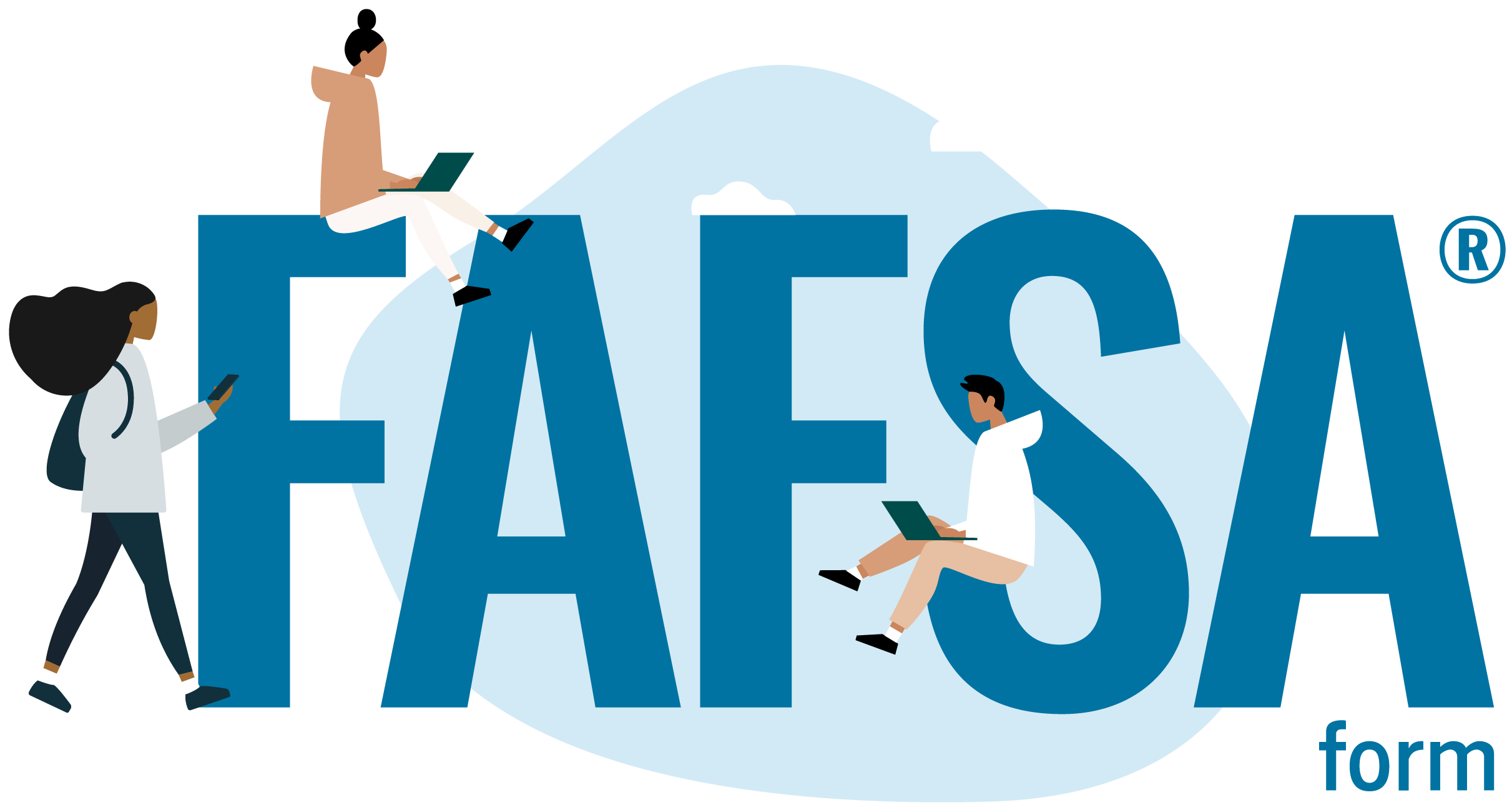Preface
When Future Workforce Now: Reimagining Workforce Policy in the Age of Disruption launched in 2018, emerging technologies were rapidly shifting expectations of workers. Meanwhile, many employers struggled to retain talent amid a tight labor market fueled by a decade of economic expansion. Leaders around the globe were and still are adapting to these global forces. Future Workforce Now was launched to assess the impacts of technological disruptions on work, workers and workplaces and their implications for state policy. After more than a year of research and consultation with experts and state leaders, this guide offers governors and state policymakers a comprehensive toolkit for building a technologically resilient workforce ready to thrive in an evolving economy.
This publication was written before the COVID-19 outbreak and associated social and economic shocks. The world has since entered an entirely new state of disruption that will only accelerate the trends previously affecting the future of work and workers. This new context reinforces the findings of the Future Workforce Now initiative and underscores the urgency of the policy transformations that should be implemented as part of a systemwide, resilient education and workforce development agenda. States face unprecedented challenges, but leaders should not overlook the opportunity to use the innovations this guide identifies and those developed during the global pandemic. In addition, the authors encourage readers to consider the following:
An economic downturn will likely accelerate the adoption of technology in the workplace. Automation has historically accelerated during economic shocks as industry replaces simple tasks with technology to minimize labor expenses. To avoid major displacements, states will need to close the technological skills gap for current and future workers, facilitate the redeployment of affected workers and enhance transparency on job openings.
Preexisting shortages in the workforce exposed an acute need for rapid reskilling in high-demand fields. During COVID-19, shortages of trained workers in essential fields, including health care and state government, dramatically affected quality of services. Many states and employers developed bold strategies to employ, train and transition new and existing workers to meet this surge in demand.2 These innovations offer valuable lessons on how to rapidly train individuals for high-demand careers, including in health care.
A truly resilient workforce requires vigilant protection of vulnerable workers. Economic downturns exacerbate existing inequalities in the workforce. The economically disadvantaged, people of color, older workers, rural residents, those learning English and those with disabilities are at greater risk of falling into poverty and remaining there long after more affluent segments of the workforce recover.
Communities must target innovative, accessible, high-quality education and training and comprehensive support to these populations and prioritize their protection within recovery agendas.
Stay-at-home orders exposed a lack of preparedness for 21st century teaching and learning. When educational institutions closed due to COVID-19, teachers cited major challenges in delivering high-quality virtual learning because they were unfamiliar with the required technology and had limited training in developing online curricula. Early research on the effects of this transition to distance
learning suggests that some students experienced the learning loss typically associated with summer as early as March because of the pandemic.3 The necessitation of virtual learning during COVID-19 will also contribute to poor outcomes for the millions of students without access to a computer or the internet. Unless states consider how to adapt lessons learned from this virtual learning experiment to innovate teaching methods across education and training programs, we anticipate a growing achievement gap.
Governors, in partnership with employers, educators, individuals and leaders at every level of government, are positioned to revive and rebuild a resilient American workforce that rebounds from this crisis better prepared for the future. This guide is a catalyst for action toward this future.













